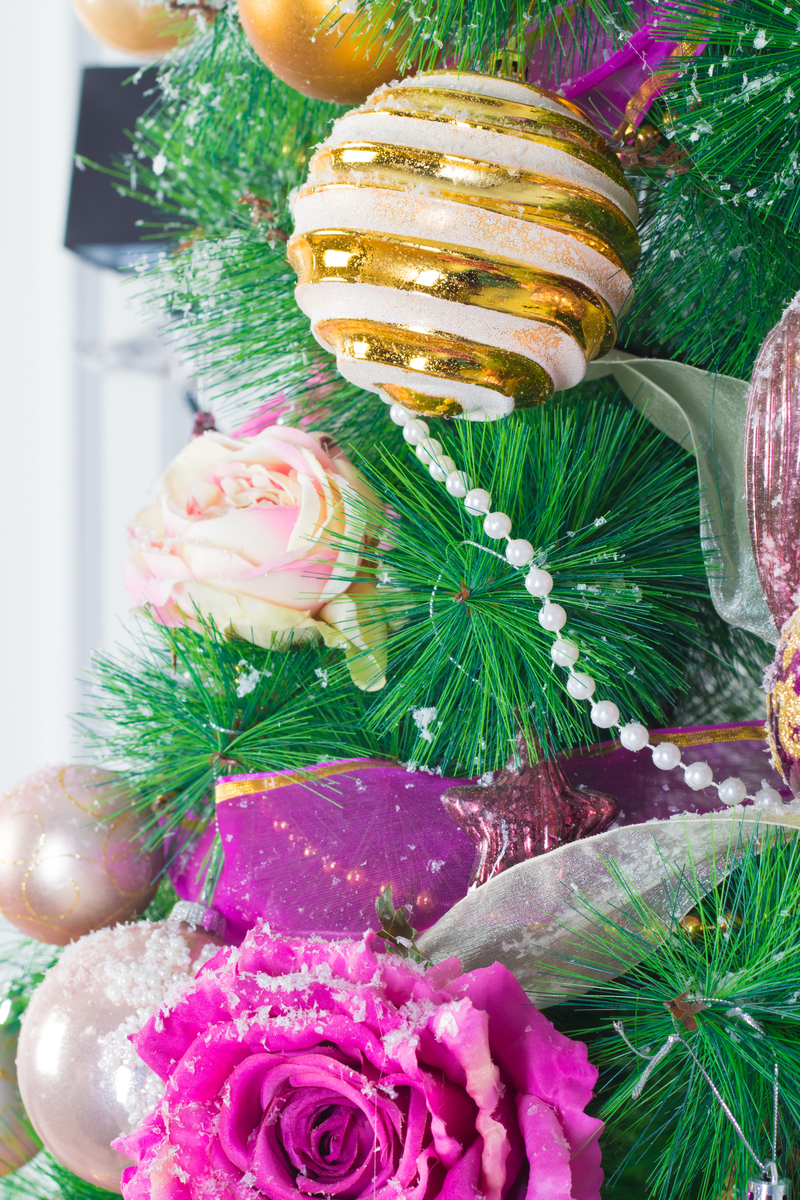Discover Poinsettia Care Techniques for Durability
Posted on 30/08/2025
Discover Poinsettia Care Techniques for Durability
The vibrant poinsettia, with its signature red and green foliage, signifies festivity, warmth, and elegance in homes throughout the holiday season. However, many people struggle to keep their poinsettias thriving once the decorations come down. This comprehensive article will guide you through top poinsettia care techniques for durability, enabling you to enjoy your plant's beauty for many months--maybe even years--when properly tended.

Why Is Proper Poinsettia Care Essential?
Understanding the care needs of poinsettias is vital to ensure their durability. Neglected plants often wither quickly, while well-maintained ones can become lush houseplants that brighten your space year-round.
- Maximize Lifespan: Adequate poinsettia care can extend the blooming season and overall lifespan of your plant.
- Avoid Common Pitfalls: Overwatering, underfeeding, and exposure to harsh environments are frequent mistakes.
- Encourage Reblooming: Proper techniques support reblooming for holiday color the following year.
The Origins and Unique Needs of Poinsettias
Poinsettias (Euphorbia pulcherrima) are native to Mexico, thriving in semi-arid, warm climates. Their needs differ from many traditional houseplants. Getting acquainted with their origins helps to understand poinsettia care techniques for durability.
- Temperature: Native settings are warm, never frosty. Poinsettias dislike chills, requiring temperatures consistently above 60?F (15?C).
- Light: Abundant, but indirect light is essential for lush growth and vibrant bracts.
- Humidity: Medium to high humidity mirrors their native environment.
Step-by-Step Poinsettia Care for Durability
Let's break down the best care techniques to keep your poinsettia durable and healthy throughout the seasons.
1. Choosing the Right Poinsettia Plant
- Pick a plant with intact, unblemished leaves and bright, vivid bracts (colored foliage).
- Check for firm stems and no evidence of wilting or leaf-drops.
- Avoid plants with roots protruding from the pot's drainage holes.
2. Optimal Location: Providing the Best Light and Temperature
- Sunlight: Place your poinsettia near a south, east, or west window with filtered sunlight. Direct, harsh sun may scorch the foliage.
- Temperature: Maintain a consistent range of 65?F to 75?F (18?C-24?C) during the day and not below 60?F (15?C) at night.
- Drafts: Avoid placing poinsettias near doors, windows, radiators, or fireplaces. Sudden changes in temperature and cold drafts cause leaf-drop and stress.
3. Mastering the Art of Watering Poinsettias
Overwatering is one of the most common reasons for short-lived poinsettias. The goal is to keep the soil evenly moist, not soggy.
- Water when the top inch of soil feels dry. Stick your finger in the soil to check.
- Allow water to drain freely from the pot; never let the plant sit in pooled water. Use saucers to catch overflow, but empty them after watering.
- If your plant comes in decorative foil, poke holes at the bottom for drainage, or remove the plant from the foil before watering.
- Avoid letting the soil completely dry out, as this may cause wilting and premature leaf drop.
4. Ensuring the Right Humidity and Air Quality
Poinsettias thrive in environments with moderate to high humidity. Dry indoor air from central heating or air conditioning can be problematic.
- Mist the plant regularly (in the morning) using a spray bottle to increase humidity around the leaves.
- Place a tray filled with pebbles and water beneath the plant's pot for natural humidity. Ensure the base of the pot is above the waterline to avoid root rot.
- Group houseplants together. This increases the relative humidity around all your plants.
5. Fertilizing for Long-Term Health and Vigor
Poinsettia fertilizer care is different during the blooming and resting phases.
- During Bloom: Poinsettias sold during holidays have been pre-conditioned to flower. Fertilize only if growth resumes (usually after February).
- After Blooming: Once new growth appears, feed with a balanced, all-purpose houseplant fertilizer (such as 10-10-10) once a month.
- Resting Period: Stop fertilizing during the dormant phase (April to June); resume when growth restarts.
6. Pruning and Pinching for Shape and Fullness
- After flowering (typically late winter to early spring) and when the leaves begin to fall, cut stems back to around 4-6 inches above the soil surface.
- Pinch back growing tips each month throughout summer. This encourages bushier growth and more flower bracts next season.
7. Repotting for Root Health
- Repot your poinsettia in late spring, using fresh, well-draining potting mix.
- Choose a pot that is 1-2 inches wider than the previous one to avoid root-bound conditions.
- Be gentle--poinsettias do not like root disturbance.
8. Preparing Poinsettias for Reblooming
A well-kept poinsettia can be encouraged to rebloom for the next winter holidays. This is a rewarding process, though it requires strict adherence to light and darkness cycles, simulating the plant's native seasonal changes.
- From late September to late November, give your poinsettia 14-16 hours of complete darkness each night. Boxes, blackout curtains, or closets are effective for this purpose.
- During the day, return the plant to bright, indirect sunlight for at least 8 hours.
- Continue this light/dark regimen until colored bracts form, then resume regular care routines.
- Avoid disturbing the cycle; interruptions can delay or prevent reblooming.
Seasonal Poinsettia Care Tips for Durability
For truly durable poinsettias, adjust your care regimen throughout the changing seasons.
Winter Care (During Festive Display)
- Avoid placing poinsettias in very cold environments or directly against frosty windows.
- Check the soil moisture more frequently if your home's air is dry.
Spring Care (After Blooming)
- After the festive season, prune stems back and reduce watering to prompt a resting period.
- As new leaves appear, slightly increase watering and begin monthly fertilization.
Summer Care (Active Growth)
- Place your poinsettia outside in a warm, semi-shaded spot once night temperatures are above 55?F (13?C).
- Pinch back tips monthly and fertilize for lush growth.
Autumn Care (Preparing for Rebloom)
- Move your poinsettia inside before the first frost.
- Begin the darkness regimen necessary for bract coloration and holiday reblooming.
Common Poinsettia Problems & Troubleshooting
Even with the best poinsettia care techniques for durability, issues may arise. Here's how to recognize and solve them quickly.
Yellowing Leaves or Leaf Drop
- Possible causes: Drafts, temperature drops, or overly saturated soil.
- Solution: Move to a draft-free zone, check watering, and maintain consistent temperatures.
Wilting
- Possible causes: Roots either too dry or waterlogged.
- Solution: Adjust watering schedule and ensure proper drainage.
Brown Edges on Leaves
- Possible causes: Low humidity or too much direct sunlight.
- Solution: Mist foliage and relocate away from strong light sources.
Frequently Asked Questions about Poinsettia Care Durability
Are Poinsettias Poisonous?
Despite common myth, poinsettias are not highly toxic. Their sap may cause mild irritation if ingested or touched. Keep out of reach of curious pets and children, but do not panic if accidental contact occurs--just rinse affected areas with water.
Can Poinsettias Live Year-Round?
Yes! If you follow the above care techniques for durable poinsettias, your plant can thrive all year and even rebloom for the next holiday season.
How Do I Make My Poinsettia Rebloom?
The key is an enforced darkness regime. Give your plant 14-16 hours of absolute darkness and 8 hours of light daily from September through November. Consistency is crucial.

Expert Advice for Poinsettia Longevity
- Dust the leaves regularly to enhance photosynthesis and keep your plant looking its best.
- If possible, use filtered or room-temperature water to avoid shocking the roots.
- Rotate the pot every week so all sides receive light and grow evenly.
- Inspect for pests like whiteflies and spider mites; treat early with gentle insecticidal soap if needed.
Conclusion: Celebrate Long-Lasting Beauty
With these expert poinsettia care techniques for durability, you can transform the popular holiday flower from a one-season wonder into a year-round houseplant that continues to impress. Proper selection, careful watering, balanced fertilizing, regular pruning, and attention to seasonal needs are the foundations of long-lasting poinsettia health. Embrace these methods, and your poinsettia can bring festive color and natural joy to your home far beyond the holiday season.
Discover the rewarding journey of nurturing your poinsettia into a long-lived beauty--because with the right care, this holiday classic never goes out of style!
Latest Posts
Discover Poinsettia Care Techniques for Durability
Keep your blossoms fresh using these three easy-to-follow methods
Guide to Nurturing Your Cut Blooms







